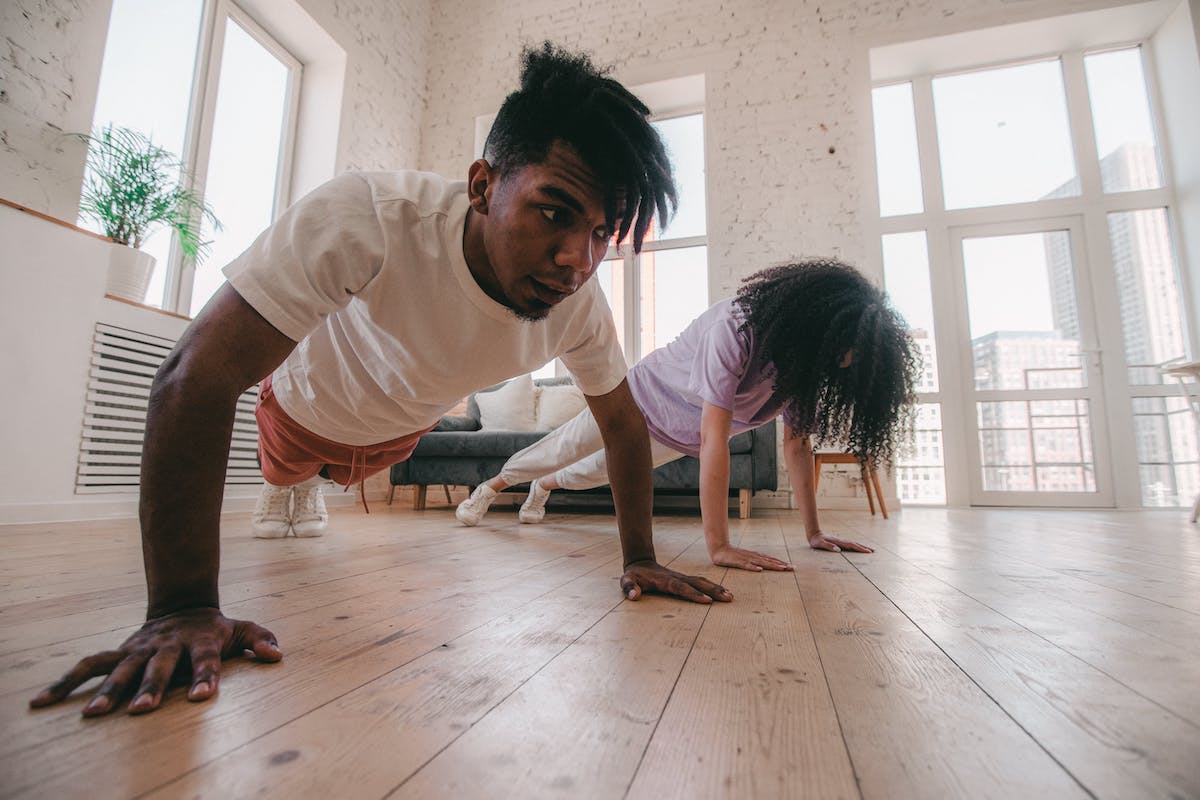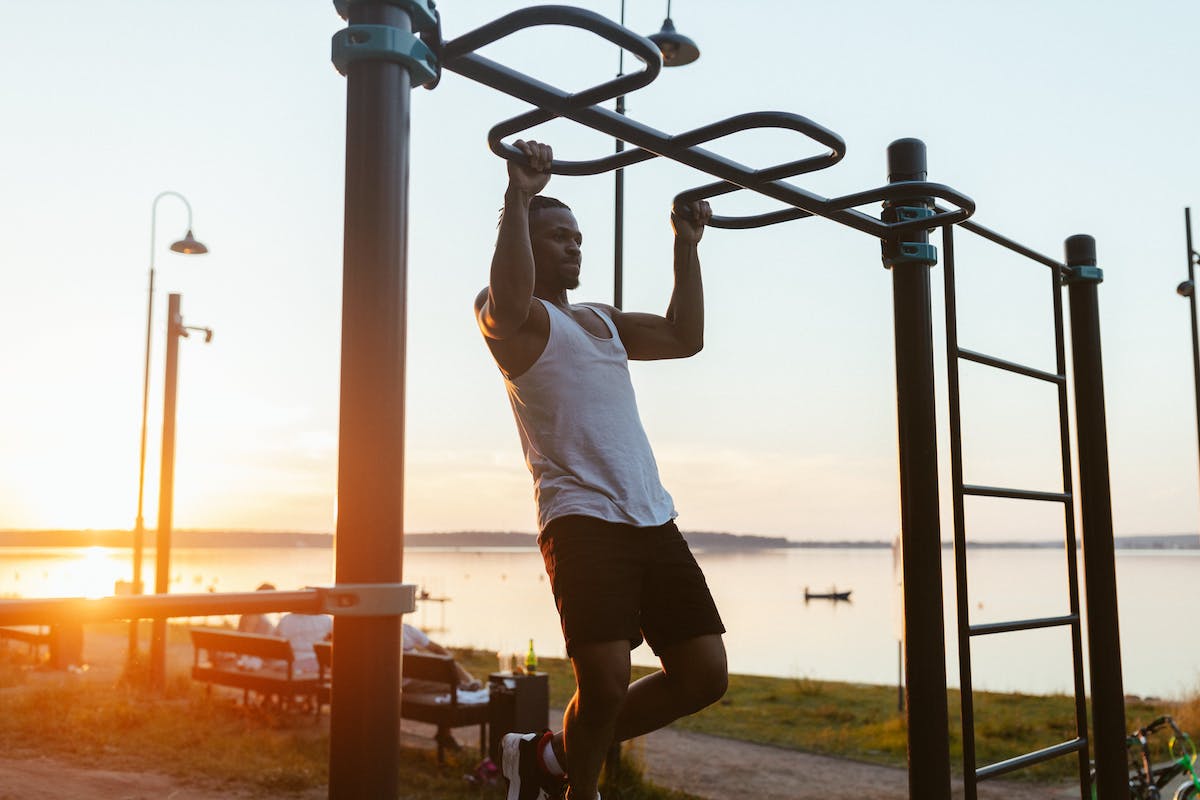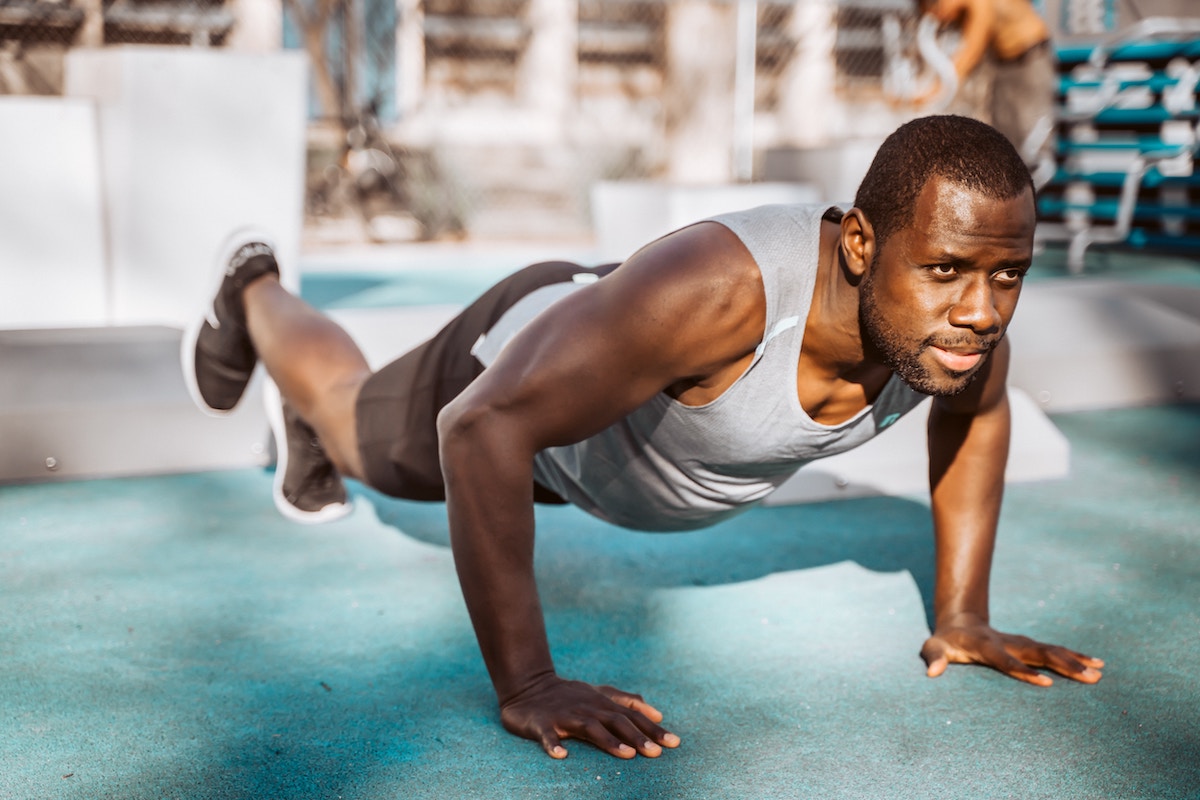
When you think about working out, your mind might shift to a tricked-out studio with all the CrossFit equipment. Perhaps you don’t go that far, but envision a traditional gym full of standard weight-lifting equipment like barbells and dumbbells.
Both spaces have a place in the fitness community. However, neither is necessary to build strength and endurance or get a stellar workout. Calisthenics, better known as bodyweight exercises, also make for worthy workouts.
Skeptical? That’s understandable. We’re conditioned to think we need heavy weights to build strength and muscle mass, but your body alone can provide all the resistance you need. Calisthenics also has benefits beyond strength and appearance. Here’s what to know and how to start with calisthenics exercises that work for all levels, from beginners and beyond.

What are calisthenics?
Calisthenics uses body weight and gravity to provide an effective, worthwhile workout. The term is derived from the Greek word “Kalos,” which means beauty, and “Stenos,” or strength.
You’ve likely made calisthenics moves in the past, perhaps in conjunction with weight training. Squats, burpees, push-ups, and crunches fall under the “calisthenics” umbrella.
Calisthenics has tons of physical and mental benefits. Here are a few noteworthy perks of these bodyweight exercises.
Muscle mass
Muscle mass is about more than a chiseled aesthetic. Having lean muscle mass decreases the risk for chronic diseases, like diabetes, and is especially important for feeling your best as you age. Resistance training, even without weights, builds muscle mass, allowing you to reap these benefits at any age.
Functional strength
Leveling up in dumbbell weights can feel fantastic — and deserves celebration. However, functional strength is also essential. Why? Functional strength allows us to function (as the name implies). Because of functional strength, you can lift heavy boxes (or kids or pets), allowing you to plow through your daily routine more quickly. You don’t need dumbbell weights to build functional strength.
Posture
Long days by a computer don’t do our posture much good. Poor posture can lead to aches and pains, reducing the quality of life. Some research, including from 2017, indicates calisthenics can help improve posture.
Better mental health
Exercise helps with more than physical health. Physical activity can also help people feel better mentally, especially because of feel-good endorphins. Some research indicates that calisthenics can specifically improve the moods of people with specific, like multiple sclerosis or ankylosing spondylitis.
Convenience
Are you traveling without gym access? Are you snowed in? Gym randomly closed? No problem. Calisthenics works with what you have — your body, which follows you everywhere. Travel plans, weather, or an early wake-up call before the gym opens can’t stop you from logging a killer strength-building workout.
Ready to get started? If you’re used to using weights for strength training or starting a fitness routine, don’t worry. Calisthenics are beginner-friendly. Those who want more of a challenge can also meet their needs by increasing speed, intensity, or rep count. Below, you’ll find calisthenics exercises that work for all levels — and help people of all levels work.

Squat
Squats work the quadriceps, hamstrings, and glutes while building functional strength that allows you to run, walk, and pick items up off the floor efficiently.
- Stand with feet hip-width apart.
- Hinge at the hips as you lower your backside toward the floor. Keep the chest up and head and neck in a neutral position to prevent straining.
- Stop when your thighs are parallel with the floor (or when you cannot go lower while maintaining good posture).
- Dig your feet into the ground and push off the floor to return your legs to the starting position.
- Repeat at least ten reps three times.
Push-up
A truly classic calisthenics exercise, you can do push-ups anywhere. The upper-body move is a sneaky core exercise, especially if you do push-ups from a full plank position (beginners can modify by going on their knees).
- Get into a plank position with wrists and shoulders aligned. Elbows should be slightly bent and not locked.
- Engage the core by drawing the belly button to the spine.
- Bend your elbows and lower to the ground. Stop when your elbows are at a right angle.
- Push yourself back up to start.
- Do at least 20 reps for three sets.
Lunge
Lunges engage the quads, hamstrings, and calves while prompting you to engage your core to maintain balance.
- Stand with feet hip-width distance apart.
- Step forward two to three feet with the right foot.
- Bend the knees until your left knee is a few inches from the ground.
- Push through the right foot to return to start.
- Repeat on the opposite side for one rep.
- Repeat ten reps three times.
Crunch
Crunches isolate the core, so the move can get something of a bad reputation. You don’t want to isolate the core all workout, every workout. However, crunches can be beneficial if done with proper form and as part of a holistic, full-body approach to fitness.
Pull Up
This move requires equipment like a bar. You might find one at a park or use a sturdy bar in your closet. Still, you’re relying on your body weight for resistance.
- Stand with feet shoulder-width apart.
- Extend your arms and slightly curve your back.
- With the chest sticking out, grab the bar. Your fingers should be facing the space in front of you.
- Pull yourself up as far as possible or until your chest reaches the bar.
- Slowly lower down.
- Repeat at least five times.
Tricep dip
You’ll need a low-to-the-ground chair, step, or bench, which you can likely find in your home, to do this upper-body move.
- Find a stable base, like a chair, and sit on the edge with hands on the surface facing you.
- Extend your legs and keep your feet on the ground.
- Slide forward so your bottom is off the chair.
- Lower yourself until your arms form a right angle.
- Push yourself back up until your arms are straight. Avoid locking elbows.
- Repeat ten times for three sets.
Burpees
Ready for some cardio? The versatile burpee gets the heart pumping while building full-body strength.
- Stand with the back straight and feet shoulder-width apart.
- Keeping your feet planted on the ground, hinge at the hips and drop to a squat.
- Place your palms on the floor and kick the legs back to assume a plank position. Engage the core by tucking the belly button toward the spine.
- Return to a squat position.
- Use your legs to explode into a jump.
- Repeat for one minute, three times.
Plank
Though planks are often included in core workouts, the move engages muscles throughout the body, including the glutes and shoulders.
- Get on all fours with wrists under shoulders and knees under hips.
- Raise your knees off the floor and straighten your legs in the back of you.
- Keep the back in a neutral position and avoid curving the lower back.
- Hold for 60 seconds (or as long as you can; you can work up to this goal).
- Repeat five times.
Editors' Recommendations
- The 3 best punching bag workouts to transform your fitness routine
- The best shoulder workouts: These are the exercises you need
- Going running? This is what (and when) to eat before you go
- Pickleball paddles, shoes, and more: The best pickleball gifts you can get
- Why is mushroom coffee suddenly so popular? We’ll tell you











